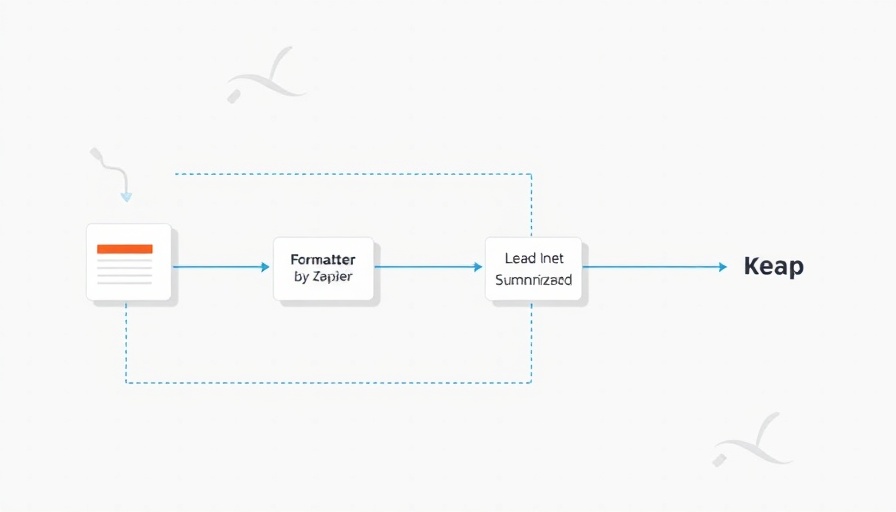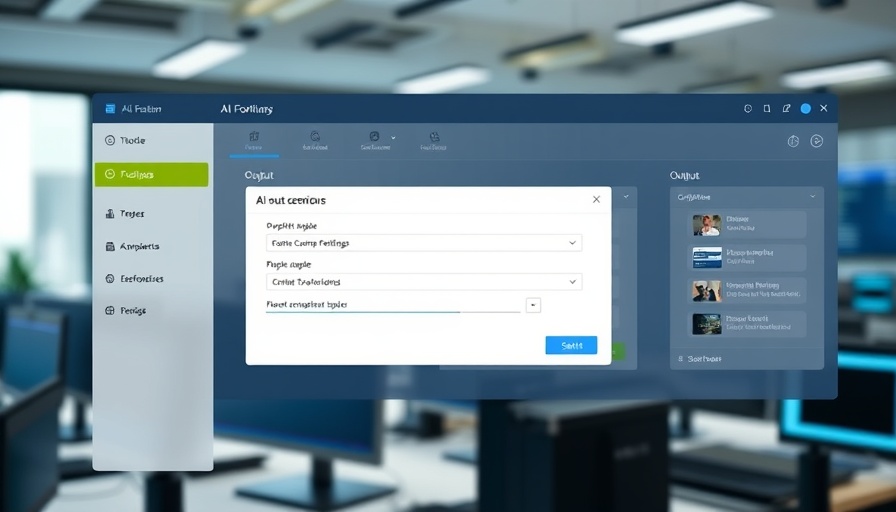
Unleashing the Power of Keap Automation for Marketing Success
In the rapidly evolving landscape of digital marketing, managing customer relationships efficiently is paramount. Enter Keap, a robust CRM (Customer Relationship Management) solution designed to keep interactions personal while meeting the diverse needs of small businesses. When paired with Zapier, Keap transcends its basic capabilities, enabling marketing professionals to automate tasks that streamline processes, enhance lead management, and foster customer engagement.
Transforming Leads into Opportunities
For marketing teams, the journey often begins with capturing leads through various channels. Automating this process not only saves time but also ensures no opportunity slips through the cracks. Using Keap's integration with Zapier, you can:
- Create contacts from forms and ads: Automatically import leads generated from Facebook Lead Ads, Gravity Forms, or Typeform submissions into Keap, ensuring your sales team remains ready to engage at the ideal moment.
- Log meeting notes seamlessly: Every interaction with potential customers is a chance to strengthen relationships. By automating the logging of meeting notes directly into Keap, you allow your team to focus on strategy rather than data entry.
Boosting Engagement through Automation
Engagement is key to conversion, and with Keap and Zapier, you can enhance your outreach efforts:
- Gather leads from events: Whether hosting a webinar or participating in a trade show, automate the capture of attendee information into your CRM. Streamline post-event follow-ups and provide a personalized touch.
- Keep your team informed: Using automation to send updates to team members when new leads are collected or responses are received can significantly improve communication.
Connecting Your CRM with Other Tools
In today’s dynamic environment, utilizing multiple tools is the norm. The real magic lies in their integration:
- Spreadsheet Syncing: Connect Keap with Google Sheets to easily manage contact lists and track outreach efforts while ensuring everyone on your team has access to the most current information.
- Automatic enrollment: As your leads move through their journey, you can automate their enrollment into various marketing and learning platforms, enhancing the customer experience while reducing manual workflows.
Future Trends and Opportunities in Marketing Automation
As marketing shifts toward more personalized interaction driven by data, automation will take center stage. Companies that harness tools like Keap and Zapier to maximize their efficiency are likely to outperform their competitors. Predictions indicate that businesses integrating automation in customer relationship management will see increased conversion rates and customer lifetime value.
Embracing Automation for Competitive Advantage
For marketing professionals aiming to thrive in an ever-competitive landscape, understanding and implementing Keap’s automation capabilities is non-negotiable. By systematically automating your workflows, you not only enhance productivity but also allow your team to focus on what truly matters—nurturing relationships and driving sales.
If you’re ready to revolutionize your marketing efforts, explore the full capabilities of Keap paired with Zapier today. Streamline your processes, improve your data handling, and truly make every customer relationship count.
 Add Row
Add Row  Add
Add 




Write A Comment